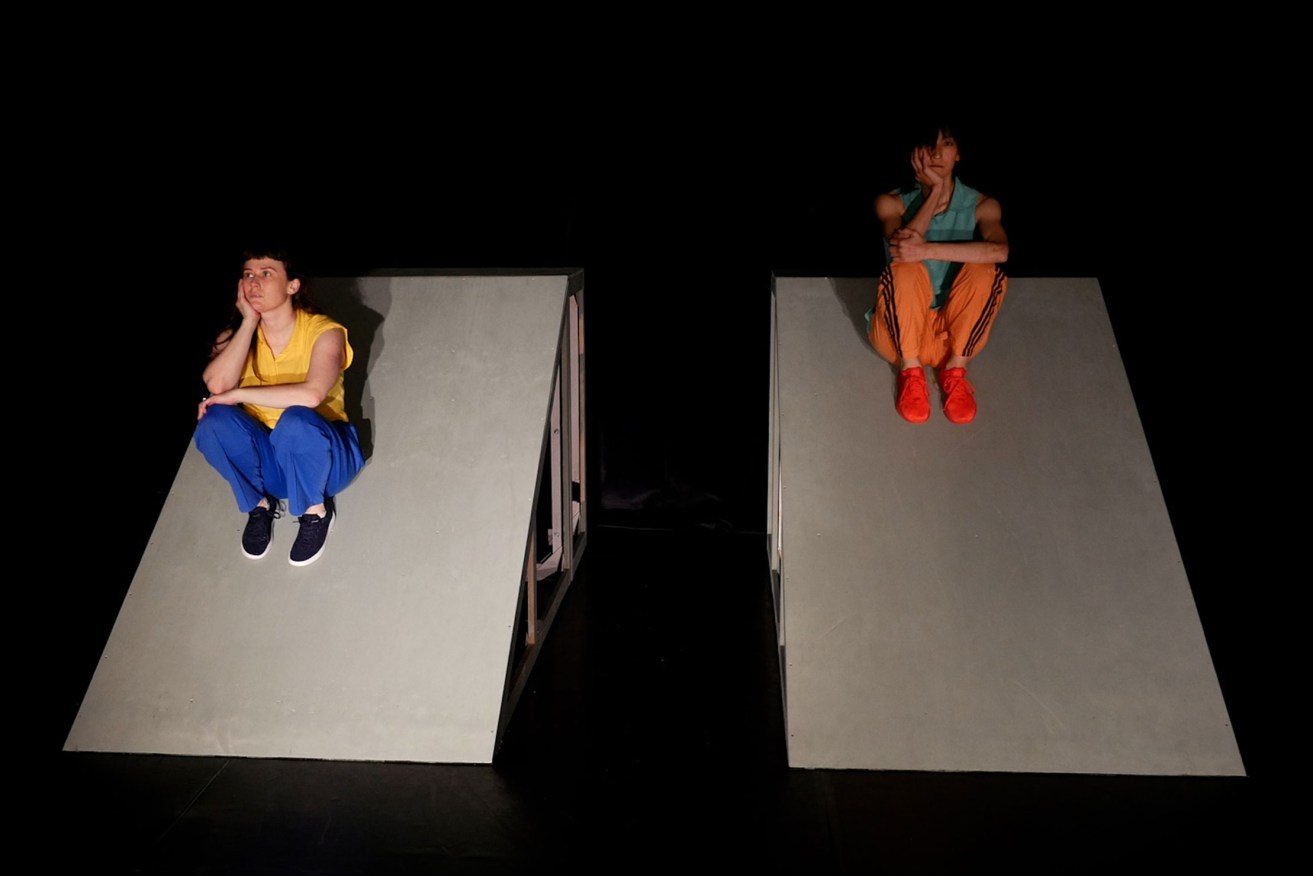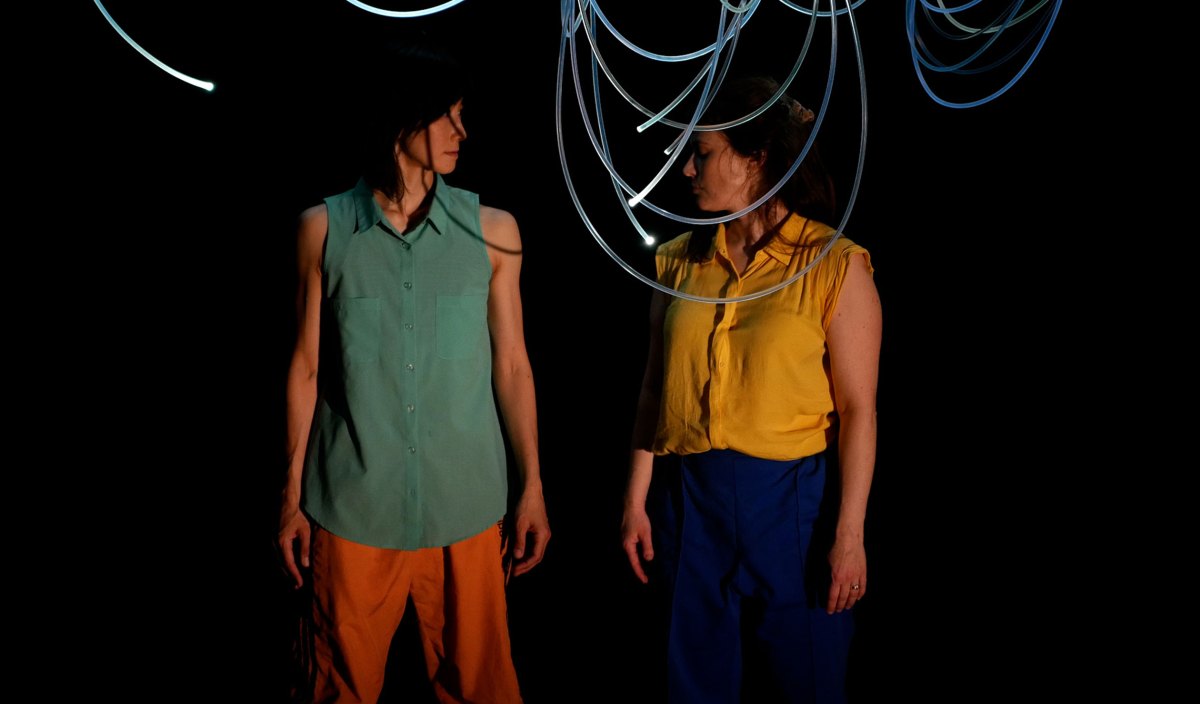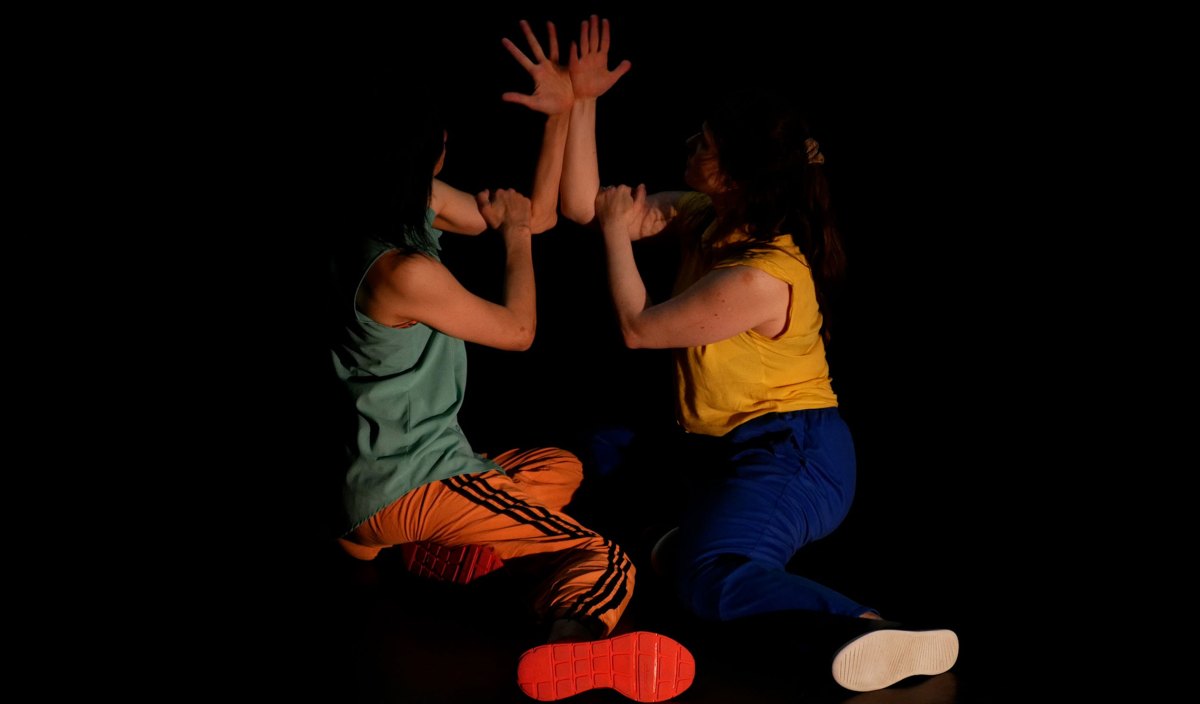OzAsia dance review: Somewhere, Everywhere, Nowhere
This powerful, haunting performance by Adelaide-based Alison Currie and Japanese-born, Berlin-based Yui Kawaguchi explores the constraints and possibilities of this strange new age in which we find ourselves.


Somewhere, Everywhere, Nowhere: Alison Currie and Yui Kawaguchi manage to convey a sense of being together, yet apart.
In 2018, when choreographer and performer Alison Currie and award-winning solo artist Yui Kawaguchi first met at OzAsia, few could have imagined the future we now find ourselves in; an age in which we are physically disconnected through lockdowns and social distancing, while brought closer by a digital technology that also divides, dehumanises and isolates us.
Somewhere, Everywhere, Nowhere is a masterful distillation of this, and other dissonances. In 50 short minutes Currie and Kawaguchi manage to convey this sense of being together, yet apart; of being individuals from different nations who share the same humanity; of finding connection in a virtual world while growing ever more disconnected from what is real.
The performance begins with Kawaguchi perched on a steep slope, her green top, red trousers and shoes searing against Fabian Bleisch’s stark set and lighting design. Seemingly rooted in place, she rises, bends and sways as if swept by an invisible wind, her arms reaching out, angular, like antennae. A large knotted mass of fibre-optic cables hangs suspended, sparkling seductively on the opposite side of the stage; a presence that seems at once comforting and threatening.
Kawaguchi splits apart the slope with her feet to reveal it is made of two separate wedge-formed, hollow installations, sliding one of them across the stage to reveal Currie, dressed in a yellow top and blue trousers crouched within. The performers use these clever stage devices to convey feelings of struggle, frustration and contemplation as they repeatedly climb up, perch upon, or slide down them, with a hint of absurdity that’s reminiscent of a Beckett play.
Feelings of restriction, containment and isolation are evoked while each crouches or lies inside their respective, triangular cubicles, and the way each is lit internally by different tones of light play off the colours of the performers’ clothing and heighten a sense of the geographic and cultural distance between Japan and Australia.
The two performers never seem more isolated from one another than when they are close together; they mirror each other’s movements, seemingly unaware at first of how they echo one another. It is only when they are lured closer to the powerful presence of the knot of cables that they seem finally see one another, and touch; yet as they continue to compare and echo one another’s movements, there’s a sense they’re divided by an invisible barrier.

A large knotted mass of fibre-optic cables hanging suspended from the ceiling lures the two dancers closer.
Sascha Budimski’s immersive sound design, with its hypnotic, electronic beats and otherworldly harmonies, opens up extra dimensions. As Currie crouches in her cubicle, a soundscape plays of a woman driving through traffic, her periodic sighs and the dry ticks of the car indicator communicating the sense of isolation experienced when driving alone in a sea of traffic.
Kawaguchi and Currie move across the stage together, yet continue to remain apart, echoing movements while each having brief interludes of their own individual gestures. Sometimes they squat, each on their respective slopes, and contemplate, chin in hand, some external vision they both share while unaware they’re looking at the same thing. They don’t seem to notice the soft square of light shining down from above – an escape hatch, perhaps. Instead, they’re drawn as if against their will towards the totemic mass of fibre optic cables that flash and flow with light. Once underneath, their movements grow slow and grow soft, as if they’re mesmerised.
The sound of one-sided conversations in English, then in Japanese, floods the space: How are you doing? So surreal. Are you still there? Daijyōbu? Are you alright? Arienai. It’s unbelievable. Ima doko? Where are you now? The fibre-optic cables flash faster still. Currie’s and Kawguchi’s one-sided conversations are taken over by the sound of men and women conducting phone surveys with unseen respondents about their state of mental health. Are you depressed? Do you feel like a worthless person?
As the performance draws to a close, the cabling seems to have sucked the life from the two performers. They lie motionless, wrapped in the cabling which pulses red with life.
Whether a warning or a lament, this is a performance that will burn deep long after it is over, leaving one pondering for days afterwards about the nature of the era of connectivity and disconnection we now live in.

Somewhere, Everywhere, Nowhere is being presented at the Space Theatre as part of the OzAsia Festival until October 23.
Read more OzAsia reviews and stories – including InReview’s festival picks – here.




